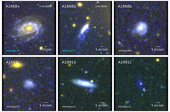 IIA ANNAPURNI SUBRAMANIAM
IIA ANNAPURNI SUBRAMANIAMCandidate ram-pressure stripped galaxies in six low-redshift clusters revealed from ultraviolet imaging
The assembly of galaxy clusters is understood to be a hierarchical process with a continuous accretion of galaxies over time, which increases the cluster size and mass. Late-type galaxies that fall into clusters can undergo ram-pressure stripping, forming extended gas tails within which star formation can happen. The number, location, and tail orientations of such galaxies provide clues about the galaxy infall process, the assembly of the cluster over time, and the consequences of infall for galaxy evolution. Here, we utilise the ∼0.5-degree diameter circular field of the Ultraviolet Imaging Telescope to image six galaxy clusters at z < 0.06 that are known to contain ‘jellyfish’ galaxies. We searched for stripping candidates in the ultraviolet images of these clusters, which revealed 54 candidates showing signs of unilateral extra-planar emission, due to ram pressure stripping. Seven candidates had already been identified as likely stripping based on optical B-band imaging. We identified 47 new candidates through UV imaging. Spectroscopic redshift information is available for 39 of these candidate galaxies, of which 19 are associated with six clusters. The galaxies with spectroscopic redshifts that are not part of the clusters appear to be within structures at different redshifts identified as additional peaks in the redshift distribution of galaxies, indicating that they might be ram-pressure stripped or disturbed galaxies in other structures along the line of sight. We examine the orbital history of these galaxies based on their location in the position-velocity phase-space diagram and explore a possible connection to the orientation of the tail direction among cluster member candidates. There are limitations due to different integration times and imaging different regions with respect to the cluster centre. The tails of confirmed cluster member galaxies are found to be oriented away from the cluster centre.
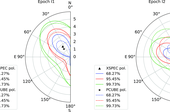 IIA SANTANU MONDAL
IIA SANTANU MONDALSpectro-polarimetric study to constrain accretion-ejection properties of MCG-5-23-16 using IXPE and NuSTAR observations
We conducted a study on the X-ray polarisation properties of MCG-5-23-16 by analysing long-term monitoring data from NuSTAR jointly with IXPE observations made in May and November 2022. The re-analysis of IXPE data gives model-dependent polarisation degree, PD (%) = 1.08 ± 0.66 in the energy band 2–8 keV, which agrees with previous studies within error bars. The model-independent analysis of PD poses an upper limit of ≤ 3.8 (1σ level) for the same energy band. The observed upper limit of PD, along with broadband spectral analysis (2–79 keV) using an accretion-ejection based model, allowed us to derive the corona geometry (i.e. radius and height) and the accretion disc inclination (∼ 33◦). Additional NuSTAR observations were also analysed to gain insights into the accretion flow properties of the source and to estimate the expected polarisation during those epochs with PD ∼ 4.3%. The radius and height of the corona varies between 28.2 ± 3.1 − 39.8 ± 4.6 rs and 14.3 ± 1.7 − 21.4 ± 1.9 rs respectively, with a mass outflow rate from the corona measuring 0.14 ± 0.03 − 0.2 ± 0.03 Eddington rate (m˙ Edd). The estimated PD values were nearly constant up to a certain radial distance and height of the corona and then decreased for increasing corona geometry. The spectral analysis further provided an estimate for the mass of the central black hole ∼ 2 × 107 M and the velocity of the outflowing gas ∼ 0.16 − 0.19c. A comparative broadband spectral study using reflectionbased models estimates the disc inclination between ∼ 31◦ ± 8◦ − 45◦ ± 7◦, and yields an expected PD of 3.4–6.0%. We also found a weak reflection fraction and a less ionised distant reflecting medium. The expected PD measured using accretion-ejection and reflection models is less compared to the expected PD measured for a given disc inclination of 45◦. Our modelling of the disc-corona-outflows and polarisation connection can be extended and validated with data from the recently launched XPoSat, India’s first X-ray Polarimeter Satellite, offering potential applications to other sources.
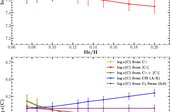 IIA HEMA, B. P
IIA HEMA, B. PHelium Abundance of the Sun: A Spectroscopic Analysis
Determining the He/H ratio in cool stars presents a fundamental astrophysical challenge. While this ratio is established for hot O and B stars, its extrapolation to cool stars remains uncertain due to the absence of helium lines in their observed spectra. We address this knowledge gap by focusing on the Sun as a representative cool star. We conduct spectroscopic analyses of the observed solar photospheric lines by utilizing a combination of MgH molecular lines and neutral Mg atomic lines including yet another combination of CH and C2 molecular lines with neutral C atomic lines. Our spectroscopic analyses were further exploited by adopting solar model atmospheres constructed for distinct He/H ratios to determine the solar photospheric helium abundance. The helium abundance is determined by enforcing the fact that for an adopted model atmosphere with an appropriate He/H ratio, the derived Mg abundance from the neutral Mg atomic lines and that from the MgH molecular lines must be the same. The same holds for the C abundance derived from neutral C atomic lines and that from CH lines of the CH molecular band and C2 lines from the C2 Swan band. The estimated He/H ratio for the Sun is discussed based on the one-dimensional local thermodynamic equilibrium model atmosphere. The helium abundance (He/H = - + 0.091 0.014 0.019) obtained for the Sun serves as a critical reference point to characterize the He/H ratio of cool stars across the range in their effective temperature.
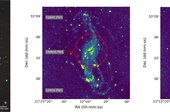 IIA CHANDAN WATTS
IIA CHANDAN WATTSAnatomy of the star formation in a tidally disturbed disk galaxy: NGC 3718
We present a UV, optical, and near-IR study of the star-forming complexes in the nearby peculiar galaxy NGC 3718, using Ultraviolet Imaging telescope, Galaxy Evolution Explorer, Spitzer, and DECam Legacy Survey imaging data. The galaxy has a disturbed optical morphology owing to the multiple tidal arms, the warped disk, and the prominent curved dust lanes, but in the near-IR it appears to be a bulge-dominated galaxy. Its disturbed morphology makes it an excellent case to study star formation in a tidally disturbed galaxy that may have undergone a recent minor merger. To study the distribution and properties of the star-forming clumps (SFCs), we divided the galaxy within the R25 (B band) radius into three parts—the upper, central, and lower regions. Using the UV band images, we investigated the warped star-forming disk, the extended tidal arms, and the distribution and sizes of the 182 SFCs. Their distribution is 49, 60, and 73 in the galaxy's upper, central, and lower regions, respectively. We determined the UV color, star formation rates (SFRs), star formation density (ΣSFR), and ages of the SFCs. The central disk of the galaxy has a larger mean ΣSFR that is ∼3.3 and ∼1.6 times higher than the upper and lower regions, respectively. We also find that the SFCs in the central disk are older than those in the tidal arms. Our study thus shows that minor mergers can trigger the inside-out growth of galaxy disks, where the younger SFCs are in outer tidal arms and not in the inner disk.
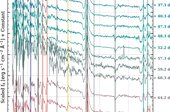 IIA RISHABH SINGH TEJA
IIA RISHABH SINGH TEJASN 2021wvw: a core-collapse supernova at the subluminous, slower, and shorter end of type IIPs
We present detailed multiband photometric and spectroscopic observations and analysis of a rare core-collapse supernova, SN 2021wvw, that includes photometric evolution up to 250 days and spectroscopic coverage up to 100 days postexplosion. A unique event that does not fit well within the general trends observed for Type IIP supernovae, SN 2021wvw shows an intermediate luminosity with a short plateau phase of just about 75 days, followed by a very sharp (∼10 days) transition to the tail phase. Even in the velocity space, it lies at a lower velocity compared to a larger Type II sample. The observed peak absolute magnitude is −16.1 mag in r-band, and the nickel mass is well constrained to 0.020 ± 0.006 M⊙. Detailed hydrodynamical modeling using MESA+STELLA suggests a radially compact, low-metallicity, high-mass red supergiant progenitor (MZAMS = 18 M⊙), which exploded with ∼0.2 × 1051 erg s−1 leaving an ejecta mass of Mej ≈ 5 M⊙. Significant late-time fallback during the shock propagation phase is also seen in progenitor+explosion models consistent with the light-curve properties. As the faintest short-plateau supernova characterized to date, this event adds to the growing diversity of transitional events between the canonical ∼100 days plateau Type IIP and stripped-envelope events.
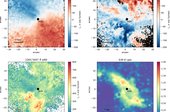 IIA STALIN, C. S
IIA STALIN, C. SExploring the Central Region of NGC 1365 in the Ultraviolet Domain
Active galactic nuclei (AGN) feedback and its impact on their host galaxies are critical to our understanding of galaxy evolution. Here, we present a combined analysis of new high resolution ultraviolet (UV) data from the Ultraviolet Imaging Telescope (UVIT) on AstroSat and archival optical spectroscopic data from the Very Large Telescope/MUSE, for the Seyfert galaxy, NGC 1365. Concentrating on the central 5 kpc region, the UVIT images in the far- and near-UV show bright star-forming knots in the circumnuclear ring as well as a faint central source. After correcting for extinction, we found the star formation rate (SFR) surface density of the circumnuclear 2 kpc ring to be similar to other starbursts, despite the presence of an AGN outflow, as seen in [O iii] 5007 Å. On the other hand, we found fainter UV and thus lower SFR in the direction southeast of the AGN relative to northwest in agreement with observations at other wavelengths from JWST and Atacama Large Millimeter/submillimeter Array. The AGN outflow velocity is found to be lesser than the escape velocity, suggesting that the outflowing gas will rain back into the galaxy. The deep UV data have also revealed diffuse UV emission in the direction of the AGN outflow. By combining [O iii] and UV data, we found the diffuse emission to be of AGN origin.
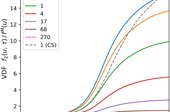 IIA SAMPOORNA, M
IIA SAMPOORNA, MFull non-LTE spectral line formation III. The case of a two-level atom with broadened upper level
In the present paper we consider the full nonlocal thermodynamic equilibrium (non-LTE) radiation transfer problem. This formalism allows us to account for deviation from equilibrium distribution of both the radiation field and the massive particles. In the present study, two-level atoms with broadened upper level represent the massive particles. In the absence of velocity-changing collisions, we demonstrate the analytic equivalence of the full non-LTE source function with the corresponding standard non-LTE partial frequency redistribution (PFR) model. We present an iterative method based on operator splitting techniques that can be used to numerically solve the problem at hand. We benchmark it against the standard non-LTE transfer problem for a two-level atom with PFR. We illustrate the deviation of the velocity distribution function of excited atoms from the equilibrium distribution. We also discuss the dependence of the emission profile and the velocity distribution function on elastic collisions and velocity-changing collisions.
 IIA PARTHASARATHY, M
IIA PARTHASARATHY, MInvestigative study of five low mass ratio semi-detached binaries
We present the first pulsation analysis of four totally eclipsing Algol systems S Cnc, SS Cet, TW And, and VW Cyg using the latest data available from Kepler (K2), and TESS databases. Based on the characteristics observed they are classified to be oscillating eclipsing Algol binaries with primary components having γ Dor type pulsations. The photometric solutions were derived for five Algols including TT Hya using Wilson-Devinney code (v2015), and the absolute parameters of all Algols in study were computed. The period variation study was also conducted using the O-C diagram and the variation is correlated either to mass loss or mass transfer or presence of third body in these systems. All the available IUE high and low resolution spectra for S Cnc, TT Hya as well as VBT and LAMOST spectra for SS Cet were used to measure the equivalent widths of prominent lines, and their significance is presented. Based on the photometric, spectroscopic, period variation, and pulsation studies the evolutionary scenario of all the five Algols is discussed using Teff - Luminosity, q-r and q-p diagrams.
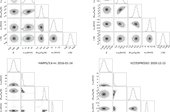 IIA SIVARANI, T
IIA SIVARANI, TRedshifted sodium transient near exoplanet transit
Neutral sodium (Na i) is an alkali metal with a favorable absorption cross section such that tenuous gases are easily illuminated at select transiting exoplanet systems. We examine both the time-averaged and time-series alkali spectral flux individually, over 4 nights at a hot Saturn system on a ∼2.8 day orbit about a Sun-like star WASP-49 A. Very Large Telescope/ESPRESSO observations are analyzed, providing new constraints. We recover the previously confirmed residual sodium flux uniquely when averaged, whereas night-to-night Na i varies by more than an order of magnitude. On HARPS/3.6 m Epoch II, we report a Doppler redshift at vΓ,NaD = + 9.7 ± 1.6 km s−1 with respect to the planet's rest frame. Upon examining the lightcurves, we confirm night-to-night variability, on the order of ∼1%–4% in NaD, rarely coinciding with exoplanet transit, not readily explained by stellar activity, starspots, tellurics, or the interstellar medium. Coincident with the ∼+10 km s−1 Doppler redshift, we detect a transient sodium absorption event dFNaD/F⋆ = 3.6% ± 1% at a relative difference of ΔFNaD(t) ∼ 4.4% ± 1%, lasting ΔtNaD ≳ 40 minutes. Since exoplanetary alkali signatures are blueshifted due to the natural vector of radiation pressure, estimated here at roughly ∼−5.7 km s−1, the radial velocity is rather at +15.4 km s−1, far larger than any known exoplanet system. Given that the redshift magnitude vΓ is in between the Roche limit and dynamically stable satellite orbits, the transient sodium may be a putative indication of a natural satellite orbiting WASP-49 A b.
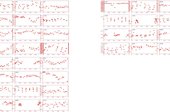 IIA PADMAKAR SINGH PARIHAR
IIA PADMAKAR SINGH PARIHARASIVA – Platform for observational and computational analysis of stellar variables
The astronomical data analysis consists of two crucial process; data reduction of the captured images and data analysis of the derived magnitudes. We present the platform ASIVA, a data analysis platform which comes along with a data reduction pipeline. The data reduction pipeline gives flexibility to analyse the FITS images and also perform image alignment for detecting the correct image coordinates for required objects. It can be custom scheduled with cron jobs so that it picks the latest data and appends the results accordingly. The data analysis platform allows user to effectively analyse the ensemble data and perform accurate data processing and grouping with ease. It is integrated with a custom algorithm to detect the variable stars from an ensemble with its relative standard deviations. The statistical, spectral and non-linear dynamics features can be extracted from time series data which can be eventually used for in-depth analysis. To validate the capability, we have analysed 15 nights of Orion Nebula Cluster field in I filter which had 1585 images. ASIVA reduces manual effort to a great extent thus saves analysis time and excludes human errors.
